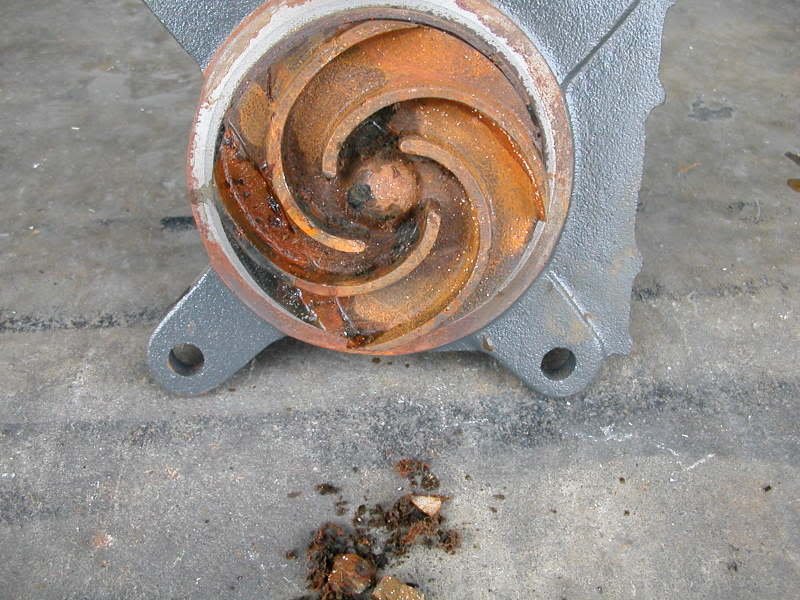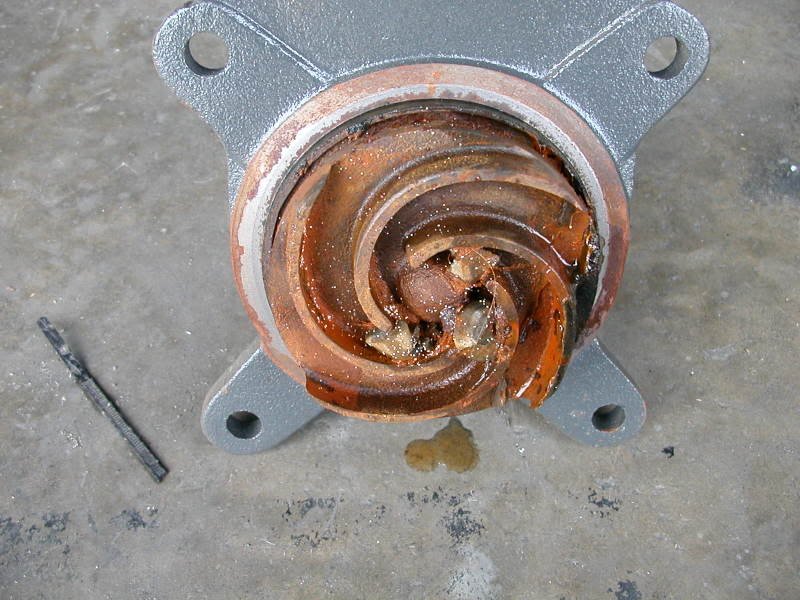Mardy, I know you don't like to read much, so I'll give you the short answer up front, then let you know where the short answer stops... then give background, just in case...
I've been designing a larger filter. Actually, 2 of them. One is a pump- out in itself (for systems other than the CP systems). The other is a filter box. I did one a while back, but didn't like the size of it. It took up too much floor space, so I decided to revise it. It has optional 2.5" ports in it, and will also come with a 2.5" and a 2" as an option. (2.5" between the tank and filter box and 2" to the wand. For our systems, it will be standard with 2.5" and 2" ports, to preserve airflow.)
Mardy That was for you. And this is a note to let you know that you can stop reading now... :wink:
Personally, I never have been a big fan of the "Leaf Guard" type filters. I've seen them as having some drawbacks, such as being too small and affecting vacuum, "quickly". But they're readily available and industry- accepted.
The CP systems work fine as long as the filter is used and the filter is in good working order (i.e., no holes or tears in the stainless steel screen) and kept clean. The pump we feature on them can pump 75 GPM to a distance of 50 feet from the system. At longer runs, the GPM isn't as high, but even at half that, it's more than enough to keep up with any cleaning job and virtually any flood. (The one featured on the FloodMaster systems pumps 125 GPM @ 50 ft.)
There was an issue when they first came out that was related to the slope of the plumbing between the tank and the pump. There had to be a constant slope to the pump. The slope on the original CP systems was good. But when the heater was later moved forward on the frame, to the center of the length of it, the plumbing was made to "loop" under the heater and back up to the pump, which turned out to be a big no-no, in that sometimes they worked and sometimes they didn't. It was a previously- unencountered situation that took some time to correct.
Systems made since that time had a definite slope, with no "partial loop" as part of their plumbing. And that slope has been gradually increased to 4" now, from back to front... not because there is a problem with less than 4, but because 4" is available, so I decided to spec it in. (I also made the plumbing larger than the original systems... 2", vs. 1.25", coming out of the bottom of the tank, to ensure better drainage with less restriction.)
The very first "CP" system we built (the one shown in the Astro van on the web site), has 1.25" plumbing and a slope of about 2". It's been in continuous operation since it was installed 3 years ago, with the only down time related to a split in the filter that let some stringy trash through that had to be cleaned out. It has not been modified in any way since it was built. We have a customer in Tennessee, who now has 3 of them. (One Unleashed and 2 with Little Giants). He didn't get them all at once. But he was so tickled with the first one, that he bought 2 more as soon as he could.
The one thing that the CP systems don't handle well is trash over 3/8" diameter through the pump. Anything that size or larger that gets through will get stuck. (Well, actually, "stringy" debris does, too, because it can wrap around the impeller.) When that happens, the pump has to be disassembled and cleaned out. The impeller has 4 "vanes", which look a lot like a pinwheel kids play with. The 4 vanes result in 4 channels. And if 1 of them gets debris stuck in it, the pump is functioning at 75% capacity, which is marginal. But the good news is that these pumps are virtually indestructible. The impeller is cast iron... not rubber.
I have a picture I took of one that the customer "swore" he always used the filter on. When we took the pump apart, we found 3 small granite pebbles, stopping up 3 of the channels between the vanes, meaning that it was working at 25% capacity. We took the pebbles out, reassembled the pump and all was well. (It turned out that that customer would pull the filter off while the system was still running, then lay the hose on the ground and walk around to the front of the system and turn it off. Somewhere along the way, the system had sucked in those pepples when no filter was connected) I'd post the picture here, but there's no provision for that, without it already being elsewhere on the Internet.
So... "Yes.", filtration is essential. If the filter is not used, the pump will stop up and have to be cleaned out. If the filter has a hole or split in it, the same thing can happen.
By the way... the new filters (they'll be options... not standard equipment) are designed to bolt to the floor. As a result, they'll always be connected.
Duane






